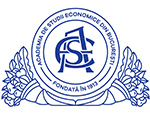
The intensity and the way each of the major sectors of the economy contributes to prosperity have been on the decision-makers’, but also of the academic and scientific specialists’ agendas. The main assumptions that have emerged are that the sectors of the economy (primary, secondary, tertiary and quaternary) are sufficiently different to allow for specialized comparison and analysis. Also, aggregate growth rates as well as performance in terms of efficiency and effectiveness are strongly influenced by the changes taking place in the relative importance of each sector, the contribution they make to the overall economic picture and the correlations and causality between these sectors. In this paper the analysis is focused on the most appropriate alternatives to the challenges coming from the dynamic transition to a new economic model, which is capable to cope with the relevant changes of the techno-industry. The main analytical and methodological vectors used in this research were the new economic development models, the threats, but also the opportunities that those who decide at the macro and microeconomic levels are obliged to identify and meet. The author placed the analysis in a new epistemological landscape, stressing that it becomes increasingly evident that it is not enough to identify threats and opportunities, but it is mandatory to identify breakthroughs and success stories. In this paper, we argue that decision-makers at all levels (macro or microeconomic) need to understand some crucial aspects: (1) new opportunities are emerging, and these have to be quickly and correctly identified; (2) logistics networks have to be optimized and prepared so as to operate with increasingly autonomous machinery and equipment; (3) that society will have to regulate and manage robot cohorts and disruptive technologies such as additive manufacturing (3D printing). The research emphasises that there is a great need for new business models for the commercialization of advanced technology assets such as those created to the ELI-NP Măgurele.








